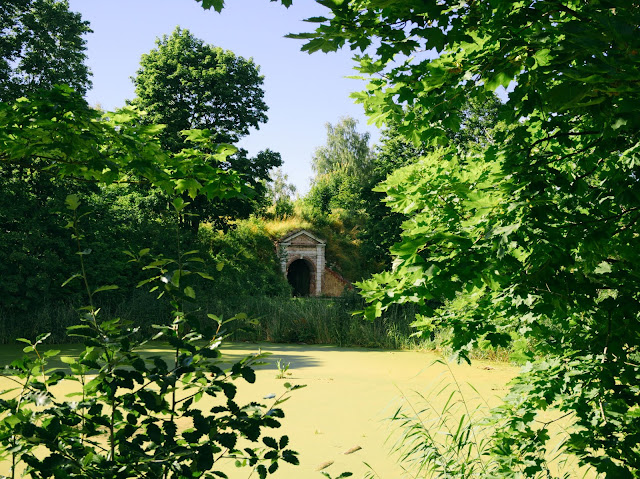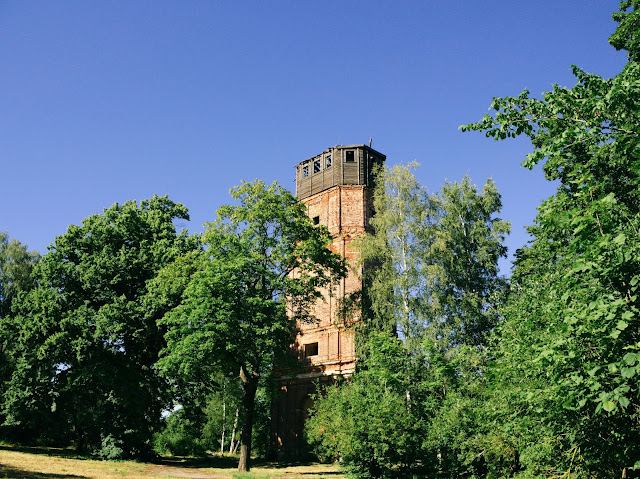CAPITAL CHRONICLE Pt. 6. Daugavgrīvas fortress and Komēta festival.
Imagined to become a luxurious hotel and entertainment space by a lousy private developer few decades ago, Daugavgrīvas fortress has indeed become a place for leisure activities. However, rich guests or expensive food is not its priority. Instead, with the advent of the 5th suburban Komēta festival this weekend, the fortress has become one of the best demonstrators of how to successfully retrofit lost and now resurrected landmarks with the help of contemporary culture. Here is our photo story on this beauty.
Daugavgrīvas fortress is a former military structure in northern Riga being around for 400 years. How come it's important yet only half the age as Riga itself? Indeed, the mouth of the river Daugava is one hell of a strategic point on the map. However due to the river actually entering the sea more to the East before changing its delta, this neighbourhood was completely irrelevant to the security of the city.
Nonetheless, for 400 years, the area has been of desire to almost every ruler that took Riga in their hands (shortly or long-term). Be it the Swedish, Saxons, Russians, Latvians, or the USSR, both nearby Daugavgrīva and Bolderāja neighbourhoods were of essence to the military, port, and industrialisation.
Needless to say, since the fortress is a military landmark, its status has always been closed to the public until recently. Although the last people in service left it almost 30 years ago, sadly we, the people, could only enjoy the space for last 5 years or so for a predictable, yet terrible reason.
After the Soviet forces left the fortress in mid-1993, it became a state property and gained national heritage status in 1995. In 1999, a private entrepreneur SIA “Aumeisteru muiža”, became the leaseholder of the fortress for whooping 49 years.
In 2016, its biggest turning point was the launch of Komēta festival. Gathering youth, suburban, and contemporary hippie cultures, urban rejuvenation, historic context, world music, lectures, and lush nature, the Berlin-like KKC culture centre established their presence in the fortress.
However criticised for loose organisation and various technical problems during the first year, the KKC were soon well praised for their voluntary work at the premises, cleaning the fortress, slowly taming the bushes and grass, fixing broken infrastructure, and, most of all, creating a promising rebirth of the historic landmark.
In the end, no one can deny - running an independent festival 15 km away from the centre in a place with no installed electricity and drinking water for the first time in their lives can be an impossible challenge. Instead, the festival downgraded to become more subcultural, but upgraded when creating a stronger community. Such community are the most avid followers, collaborators, volunteers and visitors of KKC and Bolderājas Grupa. Because of this, the whole nation and, honestly, the whole world is now welcome to enjoy the presence of this tiptop suburban spot every weekend for free.
To celebrate the upcoming Komēta festival always taking place at the turn of July and August, CAPITAL R documented their warming-up event last weekend. If the story caught your attention, click on the link and find out more about the festival. We, instead, decided to tell a visual story of the fortress as a united organism that shelters history, culture, heritage, nature, creativity, education, ecology, and discourses of trauma.
Daugavgrīvas fortress is a former military structure in northern Riga being around for 400 years. How come it's important yet only half the age as Riga itself? Indeed, the mouth of the river Daugava is one hell of a strategic point on the map. However due to the river actually entering the sea more to the East before changing its delta, this neighbourhood was completely irrelevant to the security of the city.
Nonetheless, for 400 years, the area has been of desire to almost every ruler that took Riga in their hands (shortly or long-term). Be it the Swedish, Saxons, Russians, Latvians, or the USSR, both nearby Daugavgrīva and Bolderāja neighbourhoods were of essence to the military, port, and industrialisation.
 |
| An aerial photography of the fortress in the early 1920s (from the archives of Latvian War Museum). |
Needless to say, since the fortress is a military landmark, its status has always been closed to the public until recently. Although the last people in service left it almost 30 years ago, sadly we, the people, could only enjoy the space for last 5 years or so for a predictable, yet terrible reason.
After the Soviet forces left the fortress in mid-1993, it became a state property and gained national heritage status in 1995. In 1999, a private entrepreneur SIA “Aumeisteru muiža”, became the leaseholder of the fortress for whooping 49 years.
It isn't hard to guess that, for almost 15 years of managing the territory behind closed doors, they often did not pay rent, nor did protect or develop the area. Instead, they lost most of its items and communication materials to scrap metal dealers.When the negligent leaseholder left by the end of 2013, the territory was oon taken over by "Bolderājas Grupa" - an NGO of local activists fighting for the Daugavgrīva and Bolderāja neighbourhoods for 30 years. Soon after, the fortress became an interesting landmark for artists, performers, and this time enlighted its not-so-distant future - to become a public location of culture.
In 2016, its biggest turning point was the launch of Komēta festival. Gathering youth, suburban, and contemporary hippie cultures, urban rejuvenation, historic context, world music, lectures, and lush nature, the Berlin-like KKC culture centre established their presence in the fortress.
However criticised for loose organisation and various technical problems during the first year, the KKC were soon well praised for their voluntary work at the premises, cleaning the fortress, slowly taming the bushes and grass, fixing broken infrastructure, and, most of all, creating a promising rebirth of the historic landmark.
 |
| More than 20 centimetres of archeological stratum covers the original cobblestone roads, and most of that is slowly now uncovered by Bolderājas Grupa. |
In the end, no one can deny - running an independent festival 15 km away from the centre in a place with no installed electricity and drinking water for the first time in their lives can be an impossible challenge. Instead, the festival downgraded to become more subcultural, but upgraded when creating a stronger community. Such community are the most avid followers, collaborators, volunteers and visitors of KKC and Bolderājas Grupa. Because of this, the whole nation and, honestly, the whole world is now welcome to enjoy the presence of this tiptop suburban spot every weekend for free.
To celebrate the upcoming Komēta festival always taking place at the turn of July and August, CAPITAL R documented their warming-up event last weekend. If the story caught your attention, click on the link and find out more about the festival. We, instead, decided to tell a visual story of the fortress as a united organism that shelters history, culture, heritage, nature, creativity, education, ecology, and discourses of trauma.














Comments
Post a Comment